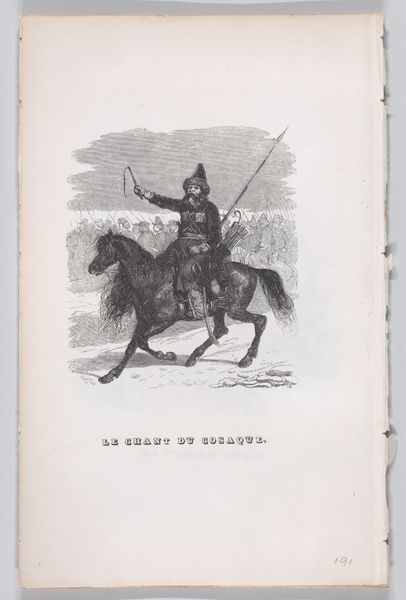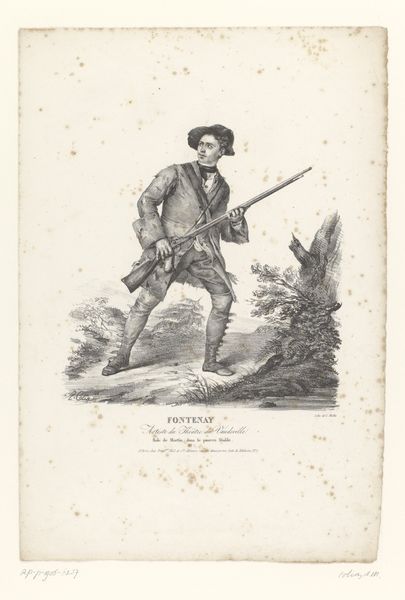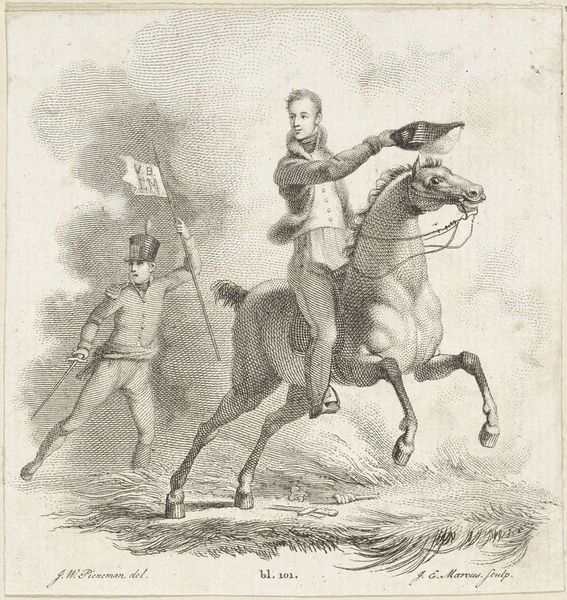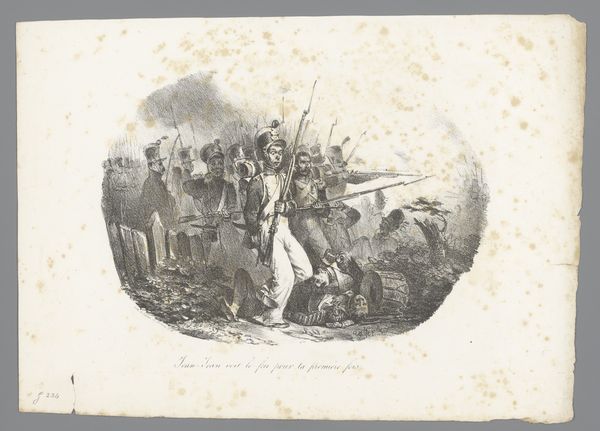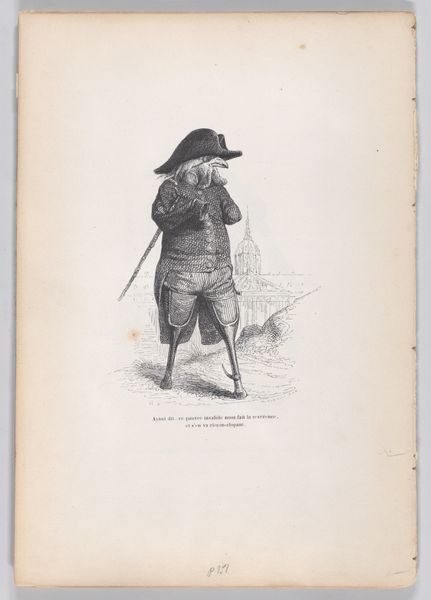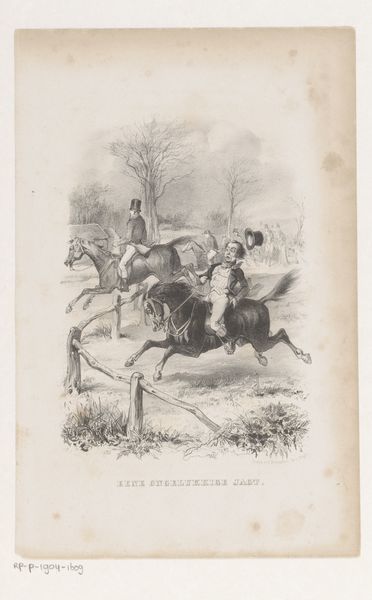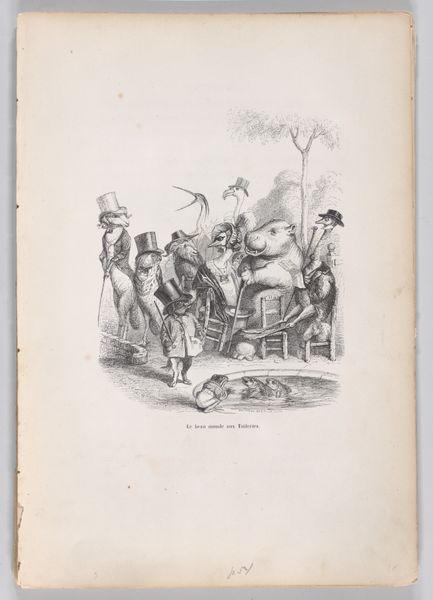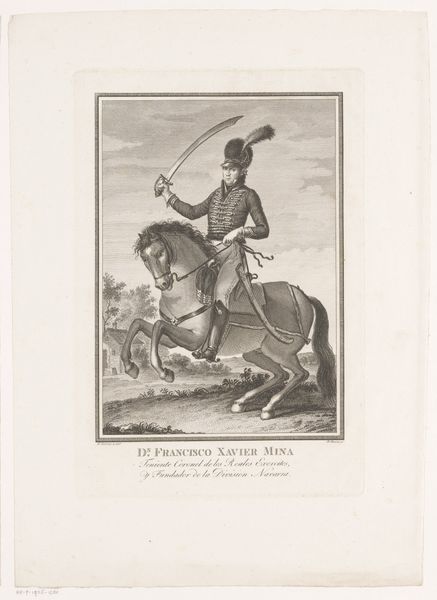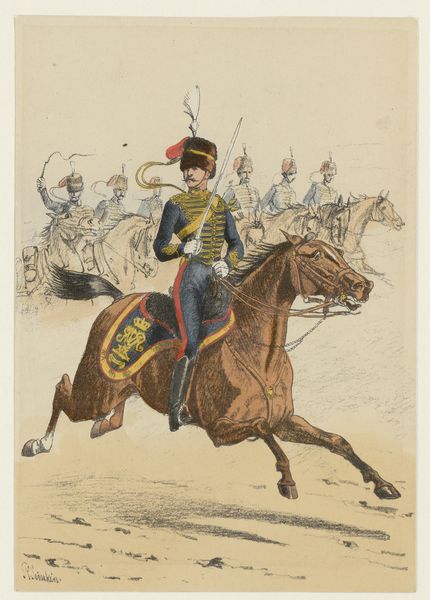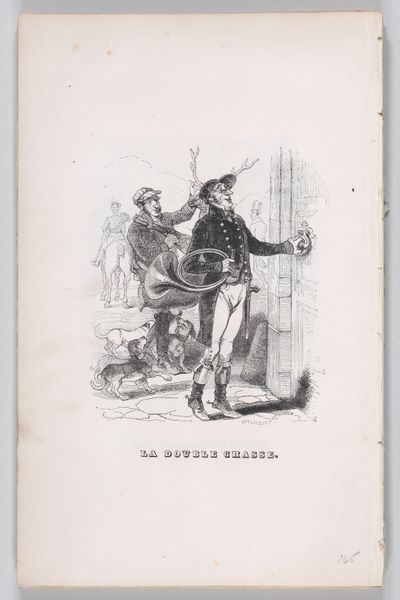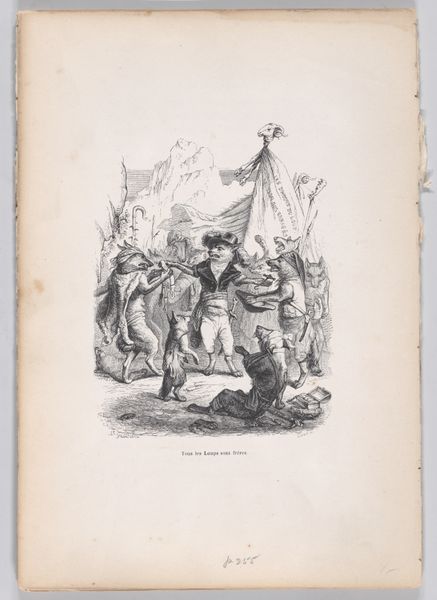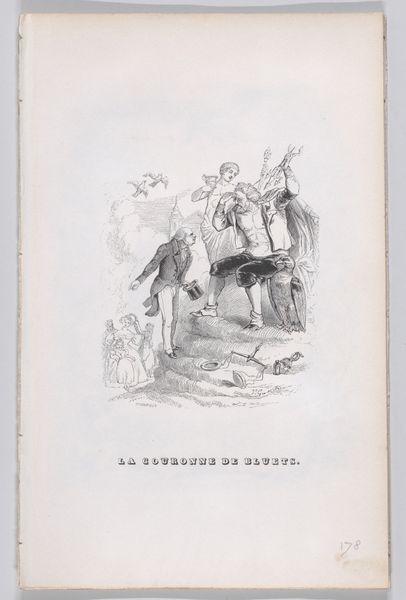
"The Marquis of Carabas" from The Complete Works of Béranger 1836
0:00
0:00
drawing, lithograph, print, etching, engraving
#
portrait
#
drawing
#
narrative-art
#
lithograph
# print
#
etching
#
caricature
#
romanticism
#
engraving
Dimensions: Sheet: 8 5/8 × 5 1/2 in. (21.9 × 14 cm)
Copyright: Public Domain
Editor: Here we have J. J. Grandville’s lithograph, “The Marquis of Carabas,” from 1836. The figure on horseback, brandishing a sword, looks rather self-important to me, a bit pompous perhaps. What’s your take? What do you see in this piece? Curator: It’s interesting you say pompous. Consider the Marquis himself – a literary figure promising wealth and status based on deception. Grandville uses visual language of power: the raised sword, the military garb. But observe how the faces in the crowd are drawn: they appear vacant, almost comical. Doesn't that disparity speak volumes about the illusion of authority? What cultural symbols do you recognize here, hinting at a social critique? Editor: I see what you mean about the crowd; their expressions *are* a little blank. And I suppose the Marquis’s exaggerated posture adds to that sense of… fakery. I guess it’s more complicated than simple self-importance. How did this imagery function at the time? Curator: Consider Béranger's writings, full of satire directed at the aristocracy and social inequalities. Grandville was translating that pointed commentary into visual form. He presents us with the hollow symbols of power and status and asks the viewer to question their authenticity. Is it praise, or something sharper? Think about the impact such a subversive image might have had during the July Monarchy. Do you perceive an enduring message within that commentary? Editor: Definitely enduring! We see those hollow symbols of power all the time today, and the almost hypnotized masses following them. The sword, the uniform… it's still effective, even when it's ridiculous. Curator: Precisely. Grandville understood how images work to convey ideological messaging, revealing a truth through visual cues. So much about how we interpret imagery is layered with history. Editor: That makes me think differently about the entire composition. Thank you. I have so much to think about. Curator: And that's the joy of understanding visual language – the dialogue it creates across time.
Comments
No comments
Be the first to comment and join the conversation on the ultimate creative platform.

